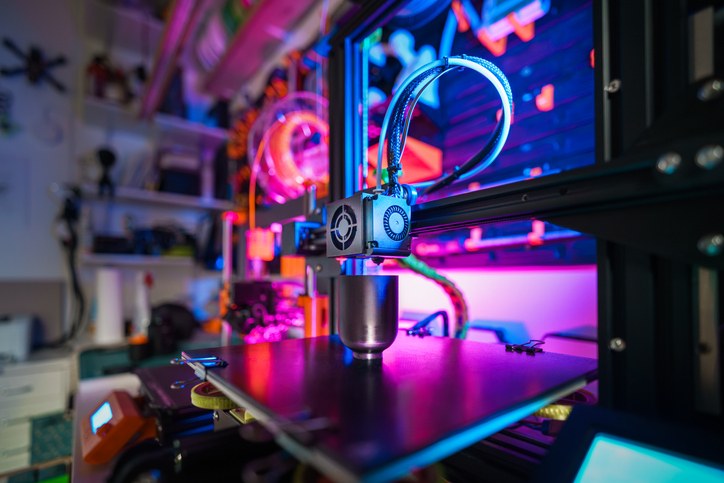First and foremost, I feel like we are corrupting a beautiful resource(computers) in our modern educational environments. How is that? We are far too often using computers primarily to gather immense amounts of student testing data. Instead, we need to be teaching students how use technology as a powerful resource in order to rapidly gather information to augment their own learning and problem solving skills.
The smartest person who I have ever known is a physicist. I asked them one time what they did when they get got stuck on a problem. They said, “I Google it.” The short answer…smart people use a search engine to speed up problem solving, i.e. they manage information.
Have you ever been around a technology guru? They are amazing people. I would hire one of these folks in a New York minute. You probably have a student in your classroom who is also pretty good with tech. Now, imagine equipping all students with a type of technological literacy which allows them to compete with the best in the world. Managing information(not taking standardized assessments) is going to give students an immense advantage in future job markets..
Quite simply, when we use technology only to benchmark test, answer probe questions, or make assessment easier in a multitude of ways…we are using only about 0.05% of what that computer can actually do. The first true computers were designed to help with navigation, break codes during WW2, and to compute rocket trajectories of rockets. They were never intended to measure student learning. The human mind is a brilliant creation. We need to assess student learning with other human minds.
Recently, I have wrestled with the following question, “Are students learning more at home than they are at school?” At home, there are very few guard rails(and I am not sayin’ that is always a good thing!) on computer technology. Students are interacting with people all over the world on gaming systems. They can listen to dozens of genres of music on iTunes or Spotify. They can read news from nearly any country. Even young children know how to integrate your home’s wifi network. They are learning to manage information at home, and not at school. At home, they are using the other 99.05% of the computer’s ability. And I wholeheartedly agree, that you had better monitor that activity, or they could open doors into places where we don’t want our kids.
While suffering through an inservice, I remember a speaker noting, “Technology is as easy for students as breathing air. They have been using technology since before they can walk.” What we have in our classrooms is a bunch of kids who probably know as much (or more) than the best adult tech guru in the building. If they don’t know as much, they probably can learn it in about five hours. Why are we not utilizing student abilities to access technology?
Elon Musk(see video below) was asked what USAF enlisted men, officers and students should study or pursue as a degree. He was quick to answer, “Computer science and physics….Essentially information theory and physical theory have very good predictive power in understanding the nature of the universe.” As evidence that he might know what he is talking about, SpaceX is rapidly developing heavy-lift rocket technology. In my humble opinion, they are more innovative than NASA. I mean they just brought back a rocket booster to earth in a controlled re-entry, and grabbed it at the launch tower with a pair of mechanical chopsticks. Musk wants to go to Mars. He needs scientists. He needs engineers. He needs people who can think critically, problem solve creatively, and innovate. I would suggest this is going to be true for a big segment of those entering the modern American job market.
We need to teach our students to be innovative. We need to help them to unlock their creativity. In order to do that, it is time to take the training wheels off their learning experiences at school. We can do that by teaching them to manage information through technology. Now, I am not saying that students need to have free reign over the internet for obvious reasons. Indeed, we can teach them to ride a bike and do cool stuff on that bike without training wheels…without putting them on a motorcycle.
How do we integrate technology into the classroom and begin to tap the vast resource that is generalized as “technology?”
The above question is one that we will be examining this spring on this blog. By genuinely and effectively integrating technology into our classrooms, I think we better equip our student’s for a rapidly changing world in which production jobs will be replaced by individuals who can manage information, design computer systems, and rapidly problem solve. Even better, our classrooms could become more engaging and better resemble how students are learning outside of school hours. In public education, we run the immediate risk of becoming outdated without upgrading how we use technology in our classrooms.
Here is just a taste of what I will be writing about in future posts:
How to effectively integrate Podcasts into classroom learning? I love listening to podcasts. And they great thing about podcasts, it allows students to listen to someone else’s point of view, and then critically assess it. Remember Bloom’s Taxonomy? Yep. Analyzing and Evaluation are near the top of that pyramid.
Robotics. Robotics teams do amazing things. I am not so sure that high level, high school robotics students don’t know a bit more than many professors in regards to applied technology. Why not have robotics utilized for every-day learning for all students? Robotics is a wedding of modern design and applied science!
Computer Assisted Drafting (CAD). Man, I loved drafting in high school. If students can learn how to master this, they can literally design anything. And once they design it, they can print it(see next idea)!
3-D Printing. Imagine a classroom which simply designs “stuff.” Every, single subject in the state curriculum could be covered in a classroom which designs and prints(3D) student creations. Literacy, mathematics, science, and literacy….all of it could be integrated into making stuff. I once watched a show about a man who walked students into an empty classroom. Their job? They were going to design and build all of their classroom furniture during that particular school year. Students were in charge of researching desks/tables/chairs, designing them, purchasing materials, and then building them. I would have loved that. The entire curriculum was woven into that year long project.
Collaborative Learning Across Time Zones. Look, we have the ability to do this right now! It is cheap, and it is so easy. Find a classroom which isn’t in your time zone, and work on a project together. How cool would it be to study ocean ecosystems, and get your information from a classroom which is only blocks from the Great Barrier Reef in Australia? The potential is just endless.
Numerical Weather Modeling. Now, you are talking my language. Buy an inexpensive weather model account, and track weather systems! It is fascinating to do this. There are websites which will provide three dimensional models of the polar vortext – all the way from the troposphere to the stratosphere! This is applied science at its finest.
ProTip: We must break free from high stakes testing, and get back to meaningful learning on a scope that is far past what most educators can envision today. Our classroom learning experiences will be infinitely more meaningful and interesting. Even our struggling students will be asking to come to school instead of mired in truancy proceedings. I will end with this question, “When have teachers, students, and administrators been universally excited about the learning in their buildings?”
Discover more from Rob's Innovation in Education Blog
Subscribe to get the latest posts sent to your email.




